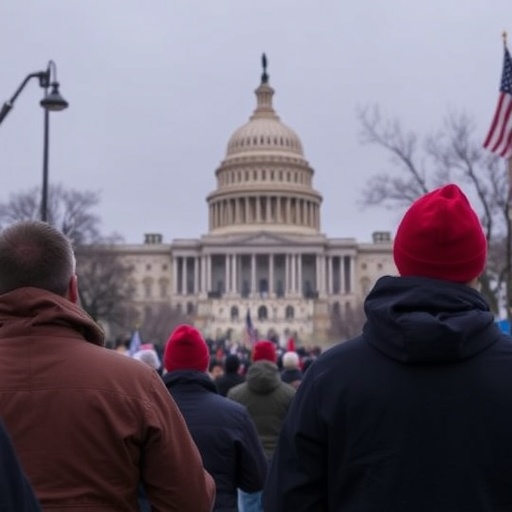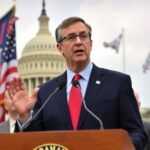U.S. Government shutdown Surpasses 30 Days: Federal Workers in Crisis as Democrats and Republicans Dig In on Budget Demands
As the U.S. Government shutdown stretches into its 32nd day, marking the second-longest in American history, hundreds of thousands of federal employees are staring down unpaid bills and uncertain futures. The Government shutdown, triggered by a fierce budget stalemate over border wall funding, shows no signs of abating, with Democrats and Republicans entrenched in their positions. This impasse isn’t just a Washington D.C. drama—it’s rippling through communities, economies, and families across the nation, leaving everyday Americans to bear the brunt.
- Federal Workers Scramble Amid Unpaid Wages and Furloughs
- Democrats Push Back on Wall Funding, Citing Broader Security Needs
- Republicans Rally Around Border Wall as National Security Imperative
- Economic Fallout Spreads from Washington to Heartland Communities
- Path Forward: Emergency Declarations and Bipartisan Breakthroughs on Horizon?
At the heart of this crisis are the federal employees—over 800,000 workers furloughed or working without pay—who are rationing groceries, dipping into savings, and facing eviction threats. “It’s like living in a state of constant anxiety,” said Maria Gonzalez, a USDA inspector in California who’s been without a paycheck since December 22. Her story echoes the plight of countless others, as the shutdown’s human cost mounts daily.
Federal Workers Scramble Amid Unpaid Wages and Furloughs
The government shutdown has plunged federal employees into financial chaos, with many resorting to food banks, side gigs, and credit card debt just to make ends meet. According to the Office of Personnel Management, approximately 380,000 civilian federal workers are furloughed, while another 420,000 are deemed essential and continue laboring without compensation. These include air traffic controllers, TSA agents, and park rangers, whose dedication keeps critical services running but at a personal toll.
Statistics paint a grim picture: A survey by the National Treasury Employees Union revealed that 70% of affected workers have less than $1,000 in savings, forcing tough choices. In Virginia, home to thousands of federal jobs near Washington, food pantry usage has surged by 40% since the shutdown began. “We’re seeing families who never needed help before,” noted Lisa Ramirez, director of a local food bank in Fairfax County. “These are professionals—scientists, lawyers, admins—now lining up for canned goods.”
Beyond immediate hardships, long-term effects loom large. Credit scores are plummeting as missed payments pile up, and mental health strains are evident. The American Federation of Government Employees reported a spike in calls to its employee assistance program, with shutdown-related stress cited in over 60% of cases. One Coast Guard member, working 14-hour shifts without pay, shared anonymously: “I’m proud to serve, but this budget stalemate is breaking us. How much longer can we hold on?”
The shutdown’s impact extends to contractors and vendors too. Small businesses reliant on federal contracts, like those providing IT services or maintenance, have laid off workers and filed for bankruptcy protections. In total, the economic hit is estimated at $11 billion so far, per the Congressional Budget Office, with no back pay guarantee adding to the uncertainty.
Democrats Push Back on Wall Funding, Citing Broader Security Needs
Democrats in Congress have steadfastly refused to budge on President Trump’s demand for $5.7 billion in border wall funding, arguing that the government shutdown is an unnecessary escalation in a partisan fight. House Speaker Nancy Pelosi, leading the charge, has repeatedly called the wall “an immorality” and a wasteful symbol, instead advocating for comprehensive immigration reform that addresses root causes like asylum processing and technology upgrades.
“This isn’t about security; it’s about symbolism,” Pelosi declared during a January press conference. “We’re willing to fund border security—drones, more agents, better ports of entry—but not a medieval wall that experts say won’t work.” Democrats point to data from U.S. Customs and Border Protection showing that most illegal crossings occur between ports, not in wall-vulnerable areas, and that existing barriers already cover 654 miles of the 2,000-mile border.
The party’s strategy includes passing multiple funding bills sans wall money, only to see them blocked in the Senate by Majority Leader Mitch McConnell, who’s vowed not to bring any bill to a vote without Trump’s approval. This budget stalemate has frustrated even moderate Democrats, who worry about the political fallout. Senator Kyrsten Sinema of Arizona, a freshman Democrat from a border state, urged compromise: “Families are suffering. We need to end this now and negotiate in good faith.”
Behind the scenes, Democratic leaders are leveraging public opinion polls—such as a recent Quinnipiac survey showing 51% of Americans blame Trump for the shutdown—to pressure Republicans. Yet, with midterms fresh in memory, Democrats see this as a chance to highlight their resistance to what they call extreme policies, even as the human cost escalates.
Republicans Rally Around Border Wall as National Security Imperative
On the other side, Republicans are framing the government shutdown as a necessary stand for national security, insisting that border wall funding is non-negotiable. President Trump, who kicked off the impasse by refusing to sign a spending bill on December 20, has taken to Twitter and rallies to rally his base, warning of a “national emergency” at the southern border.
“Democrats want open borders and crime pouring in,” Trump tweeted last week, echoing claims from supporters like Senator Lindsey Graham, who called the wall “the most effective tool we have.” Republicans cite FBI data on migrant-related crimes and overdose deaths linked to fentanyl smuggled across the border, arguing that physical barriers have proven effective in high-traffic areas like San Diego, where illegal crossings dropped 90% after fencing was installed in the 1990s.
The GOP’s unity, however, masks internal tensions. Some Republicans, particularly from districts with heavy federal employment like Texas and Florida, are feeling voter backlash. Representative Will Hurd, a retiring moderate from Texas, broke ranks slightly by co-sponsoring a bipartisan bill for temporary funding and wall talks. “This shutdown is hurting our economy and our people,” Hurd said in an interview. “We need to secure the border without shutting down the government.”
Despite such voices, party leaders like McConnell remain locked in, with Senate Republicans filibustering Democratic motions to reopen the government. The budget stalemate has also emboldened Trump’s threats of declaring a national emergency to redirect military funds for the wall, a move that could face legal challenges but might force Democrats’ hand.
Economic Fallout Spreads from Washington to Heartland Communities
The government shutdown‘s tentacles reach far beyond the Beltway, disrupting economies in unexpected ways and amplifying the budget stalemate‘s real-world consequences. National parks, closed or understaffed, have lost an estimated $500 million in visitor spending, hitting rural towns hard. In Yellowstone, for instance, local hotels and outfitters report 70% cancellations, leading to layoffs.
Federal research grinds to a halt too. At the National Institutes of Health, clinical trials are paused, potentially delaying cancer treatments and vaccine developments. “We’re not just talking paperwork,” said Dr. Elena Vasquez, a researcher at NIH. “Real lives are on hold because of this political budget stalemate.” The shutdown has also frozen IRS refunds, with tax season looming and only 40% of staff on duty, exacerbating delays for millions.
Broader economic indicators flash warning signs. Consumer confidence dipped to a two-year low in January, per the Conference Board, as fears of prolonged uncertainty weigh on spending. Airlines like Delta and American have waived fees for stranded federal workers, but the travel industry still suffers from reduced official trips. In the housing market, FHA loan processing has slowed, stalling home buys for first-time buyers reliant on federal backing.
Communities of color and low-income areas feel the pinch disproportionately. In Detroit, where federal jobs support Black and Latino families, unemployment claims rose 25%. Advocacy groups like the NAACP warn that the shutdown could widen racial wealth gaps, as federal employees from minority backgrounds often have thinner safety nets.
Internationally, the U.S. image takes a hit. Diplomats at shuttered embassies struggle to advance trade deals, and allies question American stability amid the chaos. As one European diplomat quipped anonymously, “How can we trust a superpower that can’t pay its own workers?”
Path Forward: Emergency Declarations and Bipartisan Breakthroughs on Horizon?
With the government shutdown now eclipsing the 1995-96 record of 21 days, eyes turn to potential resolutions amid mounting pressure. President Trump has hinted at declaring a national emergency by mid-February, allowing him to tap Pentagon funds for wall construction—a controversial step that could pass Congress via veto-proof margins but invite court battles from states like California.
Democrats, meanwhile, are exploring options like withholding disaster aid votes to force negotiations, though Speaker Pelosi has ruled out extremes. Bipartisan talks, mediated by figures like Vice President Pence, have yielded slim progress on a compromise: perhaps $1.6 billion for barriers in exchange for DACA protections. Yet, hardliners on both sides—progressive Democrats and Trump loyalists—resist any deal.
Public pressure is building. Protests by federal employees in D.C. drew thousands last weekend, chanting “End the shutdown now!” Polls show 54% of voters want Congress to reopen government without wall funding first, per CNN. As Super Bowl Sunday approaches without full security staffing, the stakes heighten.
Looking ahead, analysts predict the shutdown could drag into March if no breakthrough occurs, potentially costing $18 billion and risking a recessionary dip. But glimmers of hope exist: Senate negotiations resume this week, and Trump’s State of the Union address on February 5 might serve as a pivot. For federal employees, Democrats, and Republicans alike, the clock is ticking—the nation’s resilience hangs in the balance.








